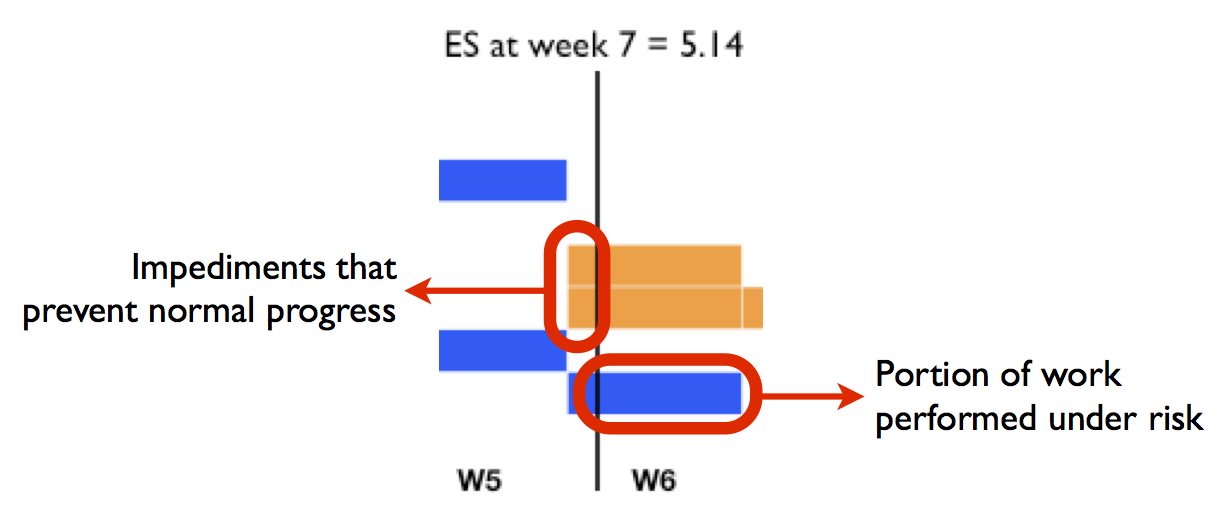Controlling a project is key to the success or failure of the project. Earned Value Management (EVM) is a well-known technique to control the time and cost performance of a project and to predict the final project duration and cost. It is an easy tool to generate early warning signals to timely detect problems or to exploit project opportunities. An overview of the EVM metrics is given in “Earned Value Management: An overview” and the formulas are summarized in “Earned Value Management: The EVM formulary”.
In this article, the schedule adherence concept is used to calculate the so-called effective earned value EV(e). To that purpose, the following two topics will be discussed:
-
Schedule adherence: Calculation of the p-factor
-
Effective earned value: Adapt current earned value for work done under risk
Schedule adherence
Measuring the adherence of a baseline schedule is presented in “
Earned Value Management: Measuring schedule adherence” where the p-factor has been introduced as a tool to identify activity impediments or likely causes of rework. The idea is based on the earned schedule concept and compares the progress of the project measured by the accrue in earned value against the earned schedule at the current moment in time AT. The calculation of the p-factor will be illustrated on a fictitious example baseline schedule of figure 1, where the values for ES and AT are equal to:
-
Actual time AT = 7 weeks
-
Earned value EV = € 90.00
-
Earned schedule ES = 5.14 weeks
-
p-factor = 0.95
?Figure 1: The schedule adherence concept shown on the baseline schedule
The p-factor will be used to calculate the effective earned value EV(e).
Effective earned value EV(e)
The p-factor assumes that lack of schedule adherence is caused by a combination of the presence of impediments or constraints and work performed under risk. Figure 1 shows an intermediate project progress state at the Actual Time AT = 7. The EV accrued at the current time AT = 7 is given in blue and the ES = 5.14. The figure visualizes the p-factor as follows:
-
The portion of the work to the left of the ES line is assumed to be performed without risk and indicates the presence of an impediment or project constraint.
-
The portion of work to the right of the ES line indicates work which is ahead of the normal project performance and is assumed to hold a certain degree of risk.
-
The p-factor is equal to the EV (blue bars) to the left of ES divided by the total EV (all blue bars to the left and right of the ES line).
The activity impediments and work performed under risk are illustrated in figure 2.
?Figure 2: Activity impediments and work performed under risk as identified by the p-factor
It is assumed that this degree of risk is the result of an inefficient use of resources which were shifted from the constrained activities to less constrained activities where the resources could gain earned value. However, these shifted resources work without the necessary inputs possibly resulting in a certain portion of rework (i.e. risk). The p-factor is a measure to express the portion of the EV without risk (referred to as EV(p), while the remaining portion is denoted as EV(r)).
A project manager should realize that the remaining EV(r) portion might be subject to risk and possibly results in rework. The effective earned value EV(e) is defined as the risk-adapted portion of earned value that is performed within the expected baseline schedule performance, taking into account that only R% of the EV(r) will be accounted as risk-free. Mathematically, these p-factor assumptions can be summarized as follows:
EV = p ∗ EV + (1 − p) ∗ EV = EV(p) + EV(r) → EV(e) = EV(p) + R% ∗ EV(r)
with
EV: Earned value
EV(p): Risk-free earned value
EV(r): Remaining earned value portion performed under risk
EV(e): Effective earned value
R%: Estimated portion of EV(r) that is usable and requires no rework




